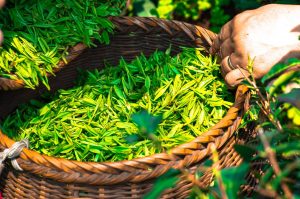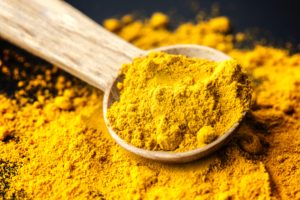 When you’re looking for the best nootropic stack, or working out which nootropic would best suit you, it can seem like there’s just too much to choose from. There are dozens of nootropics, and nootropic stack supplements, available, so it pays to be knowledgeable about their ingredients.
When you’re looking for the best nootropic stack, or working out which nootropic would best suit you, it can seem like there’s just too much to choose from. There are dozens of nootropics, and nootropic stack supplements, available, so it pays to be knowledgeable about their ingredients.
>>Discover the #No1 Best Nootropic Supplement This Year <<
Here we list the best nootropic ingredients, and the ones to avoid…
Table of Contents
Best Nootropic Ingredients
Bacopa Monnieri
Popular in Ayurvedic medicine, the herb Bacopa Monnieri helps to promote brain neuron communication, boosting memory recall and learning in particular. It also acts as an antioxidant, tackling brain ageing.
Bacopa is used in the treatment of Alzheimer’s disease, memory loss, and ADHD, as well as anxiety – the latter because it also has anti-stress properties.
Key Notes: Doesn’t just affect the elderly, but can improve memory in the young as well. May have sedative properties, hence why it’s typically combined with stimulants in a nootropic stack.
Standard dose is typically 300mg of bacopa with 55% bacoside content (active compound). Results are best over the longer term (study results are better at 8-12 weeks than 4-6, for instance).
Piracetam
Synthetic Piracetam was the very first nootropic discovered and marketed as a brain booster, with studies dating back more than 30 years linking it to improved memory and as a treatment for age-related cognitive decline.
It functions on several fronts at the same time, boosting motivation, mental energy, and sensory perception, as well as improving memory retention as a result of improved neuroplasticity.
Part of the racetam class of nootropics, so called because they all share similar chemical structures and mechanisms of action, Piracetam has shown significant promise at tackling age-related cognitive issues, though so far only moderate benefits for healthy people.
Key Notes: Piracetam is quite mild compared to the racetams that followed it, so for that reason it makes a good ‘entry level’ nootropic. You may need to wait a few days before seeing any effects, however, as opposed to the few hours you’d normally see results with other racetams. A good starter dose is 800mg three times a day. You can increase the dosage gradually up to 3g or use it within a nootropic stack.
L-Tyrosine

L-Tyrosine helps to fight stress
L-Tyrosine is an amino acid that helps to synthesise dopamine, the neurotransmitter which boosts mood, improves stress-related performance and helps memory. It has been proved particularly effective at giving a boost you when you’re overworked, sleep-deprived, and/ or over-stressed.
Fans say it can help to clear brain fog and boost multitasking ability within an hour of taking it.
It works by helping to manufacture several neurotransmitters at once, such as dopamine, epinephrine, norepinephrine and more.
Key Notes: While Tyrosine is found in certain foods – eggs, poultry, bananas, fish and soy, for instance – not all versions of it can reach the brain. Look for the N-Acetyl-L-Tyrosine version of the supplement, or as an ingredient in a nootropic stack such as Mind Lab Pro, as this is better for brain health.
Huperzine-A
Huperzine-A is considered one of the most effective nootropics for improving memory, and is in preliminary trials for use against Alzheimer’s disease. It slows down or prevents the breakdown of neurotransmitter acetylcholine, an important chemical needed for memory and brain processing. Higher levels of acetylcholine in the brain help with reasoning, memory, learning and focus.
Acetylcholine is also needed for the preservation, protection and creation of brain cells, hence Huperzine-A’s potential to fight Alzheimer’s disease.
Key Notes: After being purified from the Huperzia Serrata plant, Huperzine-A is very concentrated. A supplemental daily dose is usually between 50-200mcg (note dosage is measured in micrograms rather than milligrams), usually taken in a single dose. Side effects are rare but can sometimes include insomnia and nausea, so may be best cycled.
Vinpocetine
Vinpocetine is a pretty amazing nootropic. Derived from the periwinkle plant but mostly synthesised nowadays, Vinpocetine works by improving the blood flow to the brain, feeding it oxygen and other vital nutrients. By doing so, it helps your mind to work faster and improves clarity and focus.
It has been shown to boost memory in two days and can target individual brain cells with poor blood flow. It does so without affecting blood pressure anywhere else in the body. The only reported side effect is the occasional feeling of restlessness, though it is no stronger than having a cup of coffee and can be counteracted by taking a calming nootropic such as theanine.
Key Notes: Given that Vinpocetine is produced in a lab, it is now halfway between a drug and a supplement and perhaps as a result is given on prescription (as Cavinton®) in Europe (available over the counter in the U.S. and Canada but not sold at all in New Zealand or Australia) for cognitive issues due to poor brain circulation.
A typical daily dosage is from 15mg to 60mg, but up to 30mg should be enough to improve cognitive function and sharpen memory for most people.
>>Discover the #No1 Best Nootropic Supplement This Year <<
Choline
Choline is essential for the creation of the neurotransmitter acetylcholine, integral to many cognitive processes, and helps the brain to function at optimum levels by improving communication between neurons. It can encourage a better memory, quicker thinking, boost attention span and help you to process things faster. It is often used for the treatment of depression, memory loss, Alzheimer’s disease, age-related cognitive decline and more.
The vitamin is naturally produced in the liver, and can be found in certain foods, but supplementation is often recommended.
Key Notes: Arguably the two most popular choline versions on the market are Citicoline (CDP Choline as it is known) and Alpha GPC. Both work to increase levels of acetylcholine, but work slightly differently. Citicoline acts as an intermediate to acetylcholine, while Alpha GPC produces it as a by-product of its breakdown.
Fans of both argue over which is best, but to be honest it’s a very close race. Either is preferable to plain choline supplements, however, as basic choline supplements do little for neural concentrations of choline.
Dosages for choline vary significantly, with between 250mg to 500mg suggested by Examine.com as a typical dose for general health purposes. Higher dosages of 1-2g may be used to trigger its acetylcholine effects, though dosages should be tailored to the individual as too much may give headaches.
L-Theanine
 A non-protein amino acid and nootropic found in green tea, L-Theanine is linked to improved mental stamina and concentration, alongside stress reduction and the easing of anxiety. Many describe its qualities as the creation of a ‘relaxed alertness’, and for this reason it is often included in nootropic stacks to dampen down other stimulatory ingredients.
A non-protein amino acid and nootropic found in green tea, L-Theanine is linked to improved mental stamina and concentration, alongside stress reduction and the easing of anxiety. Many describe its qualities as the creation of a ‘relaxed alertness’, and for this reason it is often included in nootropic stacks to dampen down other stimulatory ingredients.
It works by targeting GABA – a neurotransmitter responsible for tackling stress and anxiety –alongside norepinephrine and dopamine. As a result, it generates contentment without sedation, influences our sleep cycles and boosts focus and productivity.
Key Notes: L-Theanine is also a naturally-occurring ingredient in green tea, and is the reason you can drink it without experiencing the usual caffeine-related stimulant side effects.
Phosphatidylserine
Phosphatidylserine is a nutrient which aids communication between cells by helping to create more neurons. It is a common ingredient in many brain supplements and helps to naturally reverse age-related cognitive decline.
Neurons in our brain die as we age, causing mental decline if they are not replaced. The body can make new neurons as long as it has enough of the raw material to do so. Phosphatidylserine is one such ingredient. It is naturally synthesized in the brain, but supplementation may be useful for the elderly.
As a result of the above, the nutrient can potentially slow and perhaps even reverse age-related cognitive decline.
It has been shown to be effective in treating ADHD, Alzheimer’s disease, bipolar disorders, stress, memory issues, and more, and to boost focus, concentration and recall.
Key Notes: As well as its influence on cognitive ability and recall, study subjects taking Phosphatidylserine reported a feeling of well-being, presumably caused by the increase in dopamine it encourages.
A recommended dose is between 100 to 500 mg a day, though Phosphatidylserine may be included in nootropic stacks in smaller amounts thanks to other ingredients which enhance its effects.
Ashwagandha
This Indian herb is a cornerstone of Ayurvedic medicine, the traditional medicine of the Indian subcontinent. Although the name sounds mystical and exotic, Ashwagandha translates into English as “smell of horse” due to its unique pungency. Don’t let this put you off – multiple studies report that this ancient herb can reduce inflammation and lower blood sugar levels as well as boost fertility in men. It has also been shown to suppress tumours in mice, although whether this also works in the human body is currently unknown. Unlike some traditional medicines, Ashwagandha has science on its side.
This product also has antidepressant effects. This is probably due to how Ashwagandha suppresses cortisol levels. Cortisol is the body’s natural stress hormone; producing too much of it leads to depressed mood, weight gain, fatigue and other negative effects. One study gave 200mg of Ashwagandha extract to depressed and healthy volunteers for two months and found it that reduced serum cortisol by 27.9%. This is an amazing result for a natural nootropic and subsequent studies since have backed up these findings. The evidence of Ahwaghanda’s health benefits makes it an ideal nootropic for use by the general public.
As researchers take a deeper look into Ashwagandha’s potential uses, you can expect the general public to have an increasing curiosity about its use.
Studies so far suggest that one of the molecules within Ashwagandha called Withaferin A gives it its anti-cancer traits. Be warned though; high doses of Withaferin A are toxic and will cause serious complications, so always follow the retailer’s and your doctor’s advice.
CoEnzyme Q10 (CoQ10)
A coenzyme is a small molecule that ‘activates’ enzymes and allows them to perform their intended function. CoEnzyme Q10 is naturally present within all mammals, helping to generate 95% of all the energy we use.
For the science-curious out there; Q10 enter the mitochondria in our cells and allows them to regenerate ATP energy by carrying electrons around. This makes it a crucial part of keeping alive and healthy. Recent research seems to suggest that taking CoEnzyme Q10 daily can reduce fatigue. It acts as a nootropic because it has been shown to crush fatigue and give people an effective energy boost when taken daily.
Taking 100mg daily should provide notable benefits without serious complications. The ideal amount depends entirely on a person’s weight, age and tolerance, so it’s best to start with a smaller dose and gradually build up to 100mg in order to avoid common side effects of coEnzyme Q10, such as headaches and stomach aches.. Like most nootropics, CoEnzyme Q10 can be used as and when it’s needed or daily.
>>Discover the #No1 Best Nootropic Supplement This Year <<
Creatine
Any fitness enthusiast worth their salt will recognise Creatine as being a popular supplement for bodybuilders and athletes. However, this body-enhancing powder has recently found a new fanbase within the nootropic industry.
Taking small amounts of Creatine daily, often around 5g, has a noticeable effect on stress. In a recent study, creatine reduced levels of fatigue in healthy adults from 90% to just 10%, a remarkable improvement. As there are so many companies around the globe producing Creatine, it’s one of the cheaper nootropics available. It’s not addictive, a stimulant or a steroid – Creatine is a natural compound that helps power muscle cells.
There are a few varieties of Creatine to be aware of. Creatine Monohydrate, Micronized Creatine, Creatine Serum and Creatine Ethyl Ester will all provide the same effects, the only differences between them being price and purity. Expect to pay around £3 per 100g.
Curcumin
 Curcumin is not related to cumin but it is found in turmeric, another common spice. Often used in Indian cuisine, this bright yellow powder has long been used as a health supplement.
Curcumin is not related to cumin but it is found in turmeric, another common spice. Often used in Indian cuisine, this bright yellow powder has long been used as a health supplement.
When taken routinely, Curcumin has been shown to reduce depression by massive amounts ( in test participants when they took 500mg a day.) Various other studies have shown that Curcumin can also reduce anxiety, lower high blood pressure and even decrease how quickly our brain ages as we get older.
It’s not expensive either. For a few pounds, you can purchase a small jar of Curcumin. However this will be a hassle to eat, unless cooked as part of a meal, so you may want to invest in a supplement.
Taking this product with black pepper significantly increases its effects so it’s often recommended to take 20mg of black pepper per 500mg of Curcumin. You’ll find Curcumin stocked in all health stores and online supplement shops.
Maritime Pine Bark Extract
Also known as Pycnogenol (US-registered trademark), this supplement is categorised as a proanthocyanidin, a class of naturally occurring plant extracts. Maritime pine trees (Pinus pinaster) can be found all over the Mediterranean but are more commonly found in Spain and Portugal. These trees are a treasure trove of useful substances, providing an abundance of flavonoids, catechins, proanthocyanidins, and phenolic acids.
Maritime Pine Bark Extract isn’t a single chemical – it’s a mixture of extracts. You’ve probably taken some of the ingredients found in this product before as proanthocyanidins are commonly found in grapes, wine, cranberries as well as green and black tea.
Maritime Pine Bark Extract is commonly touted to treat heart disease, high blood pressure and erectile dysfunction, although there is limited research available into these claims as yet.
However, as a nootropic it shows promise f0r improving memory in people of all ages and boosting cognitive function. According to Web MD, maritime pine bark is possibly effective for “improving mental function”. It adds: “Research suggests that taking a standardized extract of maritime pine bark by mouth for 3-12 months improves mental function and memory in adults of all ages.”
Early research also suggests that “taking a standardized extract of maritime pine bark improves mental function in adults with mild mental impairment”, though more research would be welcome.
Other Effective Nootropic Ingredients
- Vitamin B6: Vitamin B6 is needed for more than 100 enzyme reactions in the body, and a lack of it depletes neurotransmitters, causing potential age-related mental decline. Taking a supplement can prevent such loss of brain tissue, protect neurons and boost long-term memory.
- Lion’s Mane: An edible mushroom, Hericium erinaceus or Lion’s Mane is popular in Chinese medicine and is the only medicinal mushroom shown to boost cognition. It boosts Nerve Growth Factor, a protein vital for neuron growth and maintenance.
- Rhodiola rosea, also known as golden root and rose root, helps the brain to fight stress and fatigue. It may also help with mild to moderate depression by helping the brain to maintain strong levels of serotonin and dopamine, regulating endorphins and reducing cortisol. Be warned, it is a mild stimulant.
- Ginkgo Biloba: A ‘wonder herb’ feted for brain health, ginkgo biloba is a cognitive enhancer and has been shown to boost the brain’s circulation and cognitive abilities. It has potential to tackle dementia, ADHD, depression, Alzheimer’s and the effects of age on the brain. It is reliably effective for people with existing brain-related issues such as those above, but results on younger people without impairment are likely to be mild.
Ingredients that Don’t Work
Caffeine
 Yes, we all know that caffeine can temporarily increase alertness and energy… some of us wouldn’t get through the day without it. It is on this list, however, because it simply isn’t a nootropic, even though it is commonly mistaken for one. Caffeine is a stimulant instead, and prevents adenosine from calming the nervous system, thus providing an extra adrenalin release.
Yes, we all know that caffeine can temporarily increase alertness and energy… some of us wouldn’t get through the day without it. It is on this list, however, because it simply isn’t a nootropic, even though it is commonly mistaken for one. Caffeine is a stimulant instead, and prevents adenosine from calming the nervous system, thus providing an extra adrenalin release.
The resulting boost in reaction times, mental energy and attention levels is all very well but it is short-term, and practically disappears altogether once tolerance to caffeine increases. Not an ingredient to rely on, therefore.
PQQ, Pyrroloquinoline Quinone
PQQ is a little-studied nutrient that may enhance mitochondrial health by helping the formation of new mitochondria (which in turn is thought to protect cells against free-radicals).
Unfortunately, there is no evidence to suggest that it helps to boost cognition, though it may aid overall brain health among certain sectors of the population (the aged in particular). It does nothing specifically for memory, mental performance or clarity, however, therefore fails to meet the very definition of a nootropic.
There is also very little research done so far on healthy subjects and PQQ.
Cat’s Claw
Cat’s Claw is a very under-researched herb that has only been tested on animals and in test tube conditions to date. A version of it, AC-11®, is included in the phenomenally-popular Alpha Brain nootropic stack, and yet very little is known about it.
It may help to reduce social aggression and anxiety, and, according to AC-11’s® patent, may be able to repair DNA damage caused by age and environmental stress (by activating enzymes to repair it), thus presumably boosting cognitive performance and brain health.
Yet there is still so much unknown about it and, as Examine.com states, it’s unreliable and cannot be recommended.
>>Discover the #No1 Best Nootropic Supplement This Year <<